Brite Discharge Base: Matsui Discharge Brite Base for Vibrant Custom Colors
Introducing the revolutionary Matsui Brite Discharge Base, your ultimate solution for achieving a soft, comfortable, and vibrant print on 100% cotton garments. This extraordinary discharge base goes beyond its traditional use and serves as the perfect underbase for your fabric prints, allowing you to layer colors on top of it for eye-catching designs that are as soft as they are striking.
Step into a world of printing possibilities with Matsui Brite Discharge Base as your foundation. By using this base as an underbase, you can create a smooth canvas that enhances the vibrancy and longevity of the colors printed on top. Say goodbye to the stiffness and discomfort associated with traditional plastisol underbases and embrace the luxury of soft, high-quality prints on cotton fabrics.
Experience the ease and flexibility of working with Matsui Brite Discharge Base, as it seamlessly integrates into your printing process. With its user-friendly properties, you can achieve precise and consistent results, unleashing your creativity without limits.
Explore the endless potential of Matsui CMS (Color Matching Software) to create Pantone® colors, enabling you to design custom prints with unparalleled accuracy and visual impact. The discharge base sets the stage for an array of captivating colors, ensuring that your designs shine with both softness and brilliance.
Whether you’re a seasoned printing professional or a passionate enthusiast, Matsui Brite Discharge Base empowers you to take your prints to new heights. Showcase your artistic vision and creativity as you layer colors on top of the soft underbase, delivering prints that are not only visually captivating but also remarkably comfortable to wear.
So, if you’re seeking a versatile underbase that brings out the best in your fabric prints, look no further than Matsui Brite Discharge Base. Unlock the potential for softness, vibrancy, and creativity, all in one remarkable product. Elevate your fabric printing game and leave a lasting impression with the extraordinary Matsui Brite Discharge Base. Embrace the future of fabric printing and redefine what’s possible with this innovative underbase.
$24.99 – $199.99
Description
Key Features of Matsui Brite Discharge Base:
- Easy Mixing and Printing: Matsui Brite Discharge Base is designed for hassle-free mixing and printing, ensuring a smooth and efficient fabric printing process.
- Customizable Color Shades: Unleash your creativity by adding up to 15% Neo Pigments to the discharge base, allowing you to create thousands of color shades for vibrant and eye-catching designs.
- Excellent Printability: This base offers exceptional printability without the need for viscosity modifications, making it easy to achieve precise and sharp prints on a variety of fabrics.
- Luxuriously Soft Hand Feel: Unlike PVC inks, Matsui Brite Discharge Base provides an extremely soft hand feel, enhancing the comfort and wearability of your printed garments.
- Compatibility with Higher Mesh Counts: Blend Matsui Brite Discharge Base with HM Discharge Base in a 50/50 ratio to achieve compatibility with higher mesh counts, up to 230 mc in (91 mc cm), while maintaining bright and vivid colors in your prints.
- Compliance with Safety Standards: Matsui Brite Discharge Base is fully CPSIA and HR4040 compliant, ensuring that your prints meet all necessary safety requirements for consumer use.
- PVC-Free: This discharge base is proudly “PVC-Free,” reflecting its commitment to eco-friendly printing practices and reducing the environmental impact of your fabric printing projects.
Discover the ease of use and versatility of Matsui Brite Discharge Base as you effortlessly create a spectrum of colors. Achieve excellent printability without adjustments to viscosity, while experiencing an unparalleled softness that PVC inks cannot match. Explore the endless possibilities of color combinations and high mesh counts for your prints, all while adhering to safety standards and eco-conscious printing practices.
With Matsui Brite Discharge Base, your fabric printing journey enters a new realm of possibilities. Unleash your creativity, deliver soft and vibrant designs, and embrace sustainable and compliant printing with this exceptional PVC-Free discharge base. Elevate your fabric printing game with Matsui Brite Discharge Base, where creativity, comfort, and environmental responsibility unite.
Technical Specifications
Matsui Part Number: WB0112
Matsui Bright Discharge White Technical Printing Specifications:
Fabric Selection:
- When using Matsui discharge products, keep in mind that they will only discharge 100% cotton fabrics.
- If you’re printing on blends, the discharge effect will only be visible on the cotton threads, while the synthetic fibers will retain their original color giving the print a distressed look.
- Discharge ink’s effectiveness can vary based on shirt brands and batches. Re-dyed shirts may not discharge the first color well. Check with your shirt supplier for recommendations on suitable brands for discharge printing.
Preparing Discharge Inks:
- Mixing: In clean vessels, combine the discharge ink and discharge activator using clean mixing blades and utensils.
- For optimal results, mix 3-8% of Matsui or Printers Choice Discharge Activator to the weight of the ink. Some printers prefer to dissolve the discharge activator in a small amount of water before adding it to the ink. This helps ensure even dispersion throughout the ink, leading to a more consistent and effective discharge process.
- The percentage of discharge activator used will impact the brightness of the white once cured. Higher percentages result in a brighter white, but the softness of the print may be slightly affected.
- Shelf Life: Once activated with either Printers Choice or Matsui Discharge Activator, the ink has a shelf life of 12 hours. It is recommended to use the ink within this timeframe for optimal performance.
Screen & Mesh Preparation Pro Tip:
- For optimal results, ensure that you use a water-resistant emulsion such as Chromaline CPTex or Chromaline Hydro-X. These emulsions are designed to withstand the water-based nature of discharge inks.
- Using a water-resistant emulsion like Chromaline CPTex, a true dual-cure diazo emulsion, offers several advantages over photopolymer emulsions. The CPTex emulsion provides enhanced durability and resistance to both water-based and plastisol inks. It also offers better performance when exposed to high-intensity UV light during the screen exposure process. The diazo component in Chromaline CPTex provides superior water resistance, making it an ideal choice for water-based inks, such as discharge inks. Additionally, it offers better resistance to solvent-based inks, ensuring longer screen life and improved print quality. Moreover, Chromaline CPTex exhibits excellent adhesion to the mesh, reducing the risk of mesh breakdown during the printing process. It can withstand multiple print runs, which is especially beneficial for high-volume production. In summary, using Chromaline CPTex as your true dual-cure diazo emulsion brings added versatility, durability, and performance to your screen printing process, making it a preferred choice for various printing applications.
- If you anticipate long print runs or require enhanced durability, consider using a hardener such as Murakami MS Hardener on the emulsion to increase its resistance to breaking down.
- Printing with water-based and discharge inks requires careful consideration of the mesh type to achieve optimal results. Utilizing thin thread mesh, such as Saati Hydro mesh, is highly recommended for these ink types. Thin thread screens offer a larger open area per inch, creating a more open and less obstructed surface. This larger open area makes it harder for inks to dry and close in on the image area, preventing unwanted clogging or distortion. By selecting a suitable mesh, like Saati Hydro mesh, you can ensure smoother printing, maintain image clarity, and enhance the overall quality of your prints. Invest in the right mesh for your water-based and discharge ink applications to elevate your printing experience.
- After burning your screens, post-expose them in the sun to ensure they are thoroughly dry before starting the printing process. This step will help prevent any potential issues related to excess moisture in the screens during printing.
- To enhance your inks performance, create a mesh lubricant solution by mixing 30% Matsui Softener with 70% water in a bottle. Shake the mixture thoroughly until it is well combined. Before printing, apply this solution on the ink side of the mesh and evenly wipe it over the image area. This acts as a lubricant, providing a similar effect to WD-40 on the mesh threads. The lubricant helps prevent the ink from sticking on the threads of the open area, ensuring your image remains crisp and preventing any unintended closing in of the design. This simple yet effective technique can contribute to smoother printing and improved image quality.
Printing Tips:
- Use additives like softener, retarder, and quick additive to keep the ink open and workable during the print run.
- Less is better on the screen; add a small amount of ink on the press and continually add fresh, hydrated ink during the print run to prevent drying on press.
- Keep a spray bottle nearby to mist the ink when flooded to prevent drying out.
- Avoid having fans or air flow blowing on your screens
- Keep the pallets at or below 140 degrees Fahrenheit during the print run to avoid gumming up the ink in the screen.
- To enhance the performance of discharge ink and keep the ink open for a smoother printing experience, consider using additives such as Matsui Softener, Matsui Retarder, and Matsui Quick Additive. These additives can help improve ink flow and extend the open time on the screen, allowing you to achieve better results during your print run. Experimenting with different additive percentages can fine-tune the ink’s properties to suit your specific printing needs.
- Once you start the printing process, try to avoid extended pauses or stops, as prolonged time in the screen can cause the inks to start drying out. If you need to take a break, it’s advisable to leave your screens flooded with ink. Keeping the screens flooded will help maintain the moisture content and extend the workable printing time, reducing the risk of ink drying out on the screen. This technique ensures smoother printing and minimizes potential disruptions during the production process.
Curing Tips:
- Curing water-based discharge ink indeed demands more time and attention compared to standard plastisol ink. For optimal results, we recommend running your conveyor dryer at 320 degrees Fahrenheit (160 degrees Celsius) and leaving the printed garment inside for a full two minutes. This extended curing time is essential to evaporate all the water content from the ink in the tunnel, ensuring an even and consistent print.
- If the print appears darker in certain areas than others, it indicates that the garment hasn’t been fully cured, and additional time is required for proper curing. Achieving a thorough and uniform cure is crucial to obtaining vibrant and long-lasting prints.
- Discharge ink emits strong fumes during the curing process, so proper ventilation is advised to dissipate the odor. Ensuring a well-ventilated environment not only improves the working conditions but also enhances overall print quality. By following these guidelines, you can achieve outstanding results with water-based discharge ink printing while maintaining safety and quality standards.
- To prevent discharge gas transfer, avoid stacking shirts hot right out of the dryer. Use a cooling bar or fan at the end of the conveyor dryer, or make multiple shirt stacks to allow them time to cool down.
Matsui Brite Discharge Base Characteristics:
- Wet Ink Tack | Low
- After Flash Tack | Low
- Printability | Excellent
- Surface Appearance | Matte
- Opacity/Viscosity | Low/Low
- Bleed Resistance | None
- Flash Temperature | 160°F (71°C)/decreases with deposit thickness
- Cure Temperature | 320°F (160°C)
- Squeegee Hardness | Medium
- Squeegee Blade | Sharp
- Squeegee Angle | 45 degrees to screen
- Squeegee Speed | Medium
- Underlay | N/A
- Emulsion | Direct or indirect
- Mesh Count | 86-180 mc in (34-71 mc cm)
- Thinner | RV Additive
- Thickener | N/A
- Storage | 65°F to 95°F (18°C to 35°C). Avoid direct sun.
- Cleanup | Water and mild soap or detergent
- Color Range | Milky
- Substrate Type | Cotton
- Substrate Color(s) | Light, Medium and Dark Fabrics
Note: The printer must test the ink before a production run. River City Supply and affiliates are not responsible for dye migration or misuse of this product. It is imperative for the printer to test and ensure the ink is properly cured and opaque enough to prevent dye migration on particular fabrics.
Technical Sheets / Safety Data Sheets / Documents
Video
Reviews
Only logged in customers who have purchased this product may leave a review.
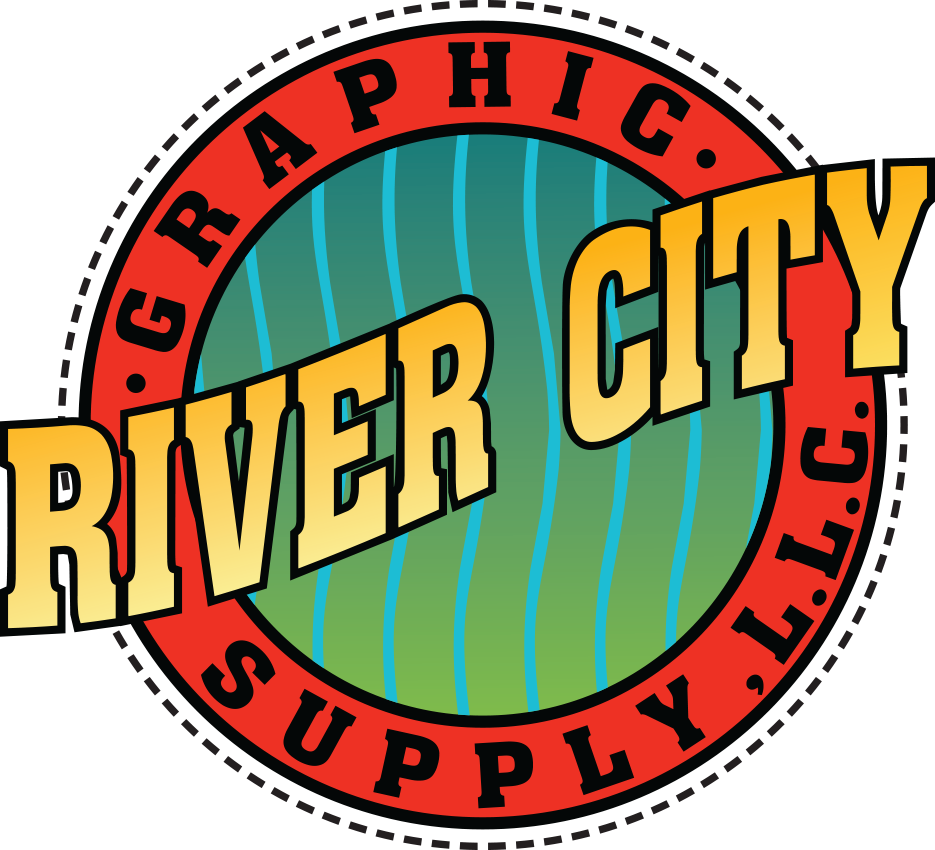
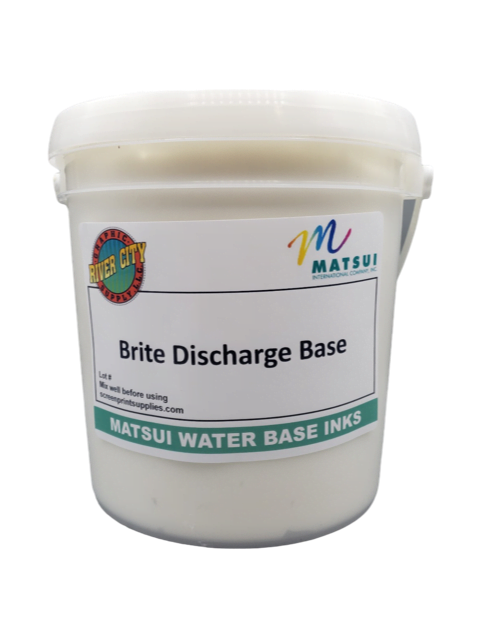
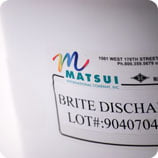
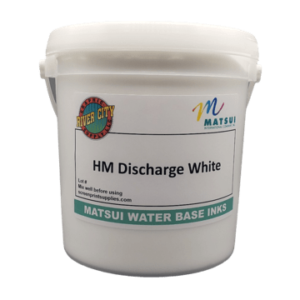
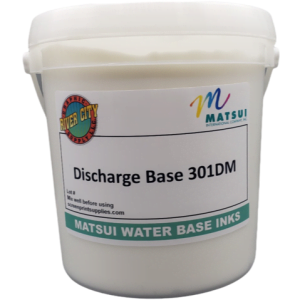
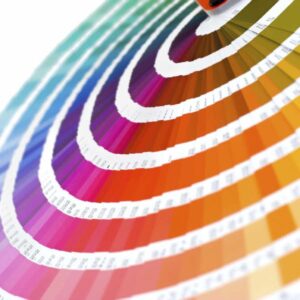
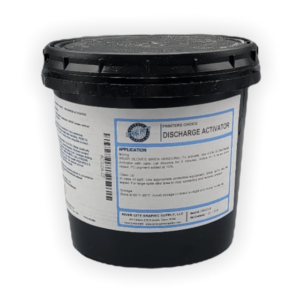
Reviews